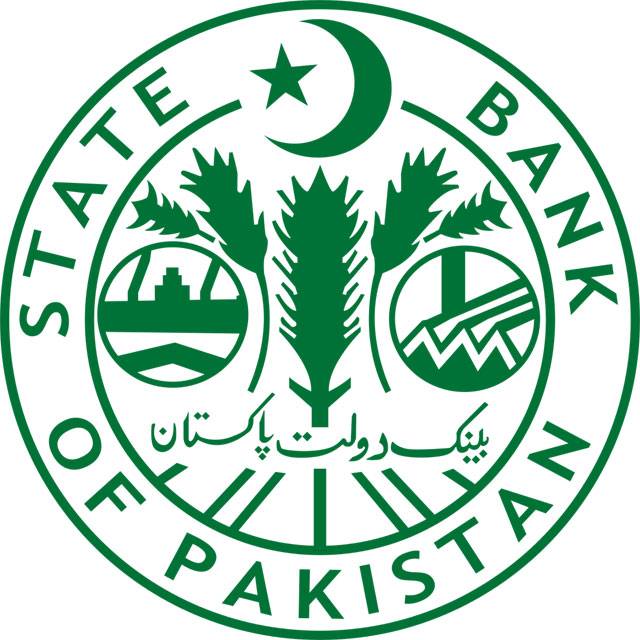KARACHI - The State Bank of Pakistan (SBP) in its Annual Performance Report (APR) for FY2016-17 has said that during FY17, banks have surpassed the agricultural credit disbursement target of Rs700 billion set by Agricultural Credit Advisory Committee (ACAC) for the year.
Agricultural Lending banks have disbursed Rs704.5 billion which is 17.8 percent higher than the last year’s disbursements of Rs598.3 billion. Further, the agricultural outstanding portfolio increased to Rs405.8 billion on end June, 2017 registering a significant growth of 17.4 percent over the last year’s position of Rs345.6 billion. Similarly, the agricultural credit outreach has increased to 3.27 million farmers at end June 2017 from 2.40 million farmers last year.
This increase in borrowers can be mainly attributed to inclusion of 15 Micro Finance Institutions/Rural Support Programmes in the SBP’s Agricultural Indicative Credit Target Scheme, as they collectively provided credit to more than 0.55 million farmers during FY17. SBP adopted a multifaceted strategy and made all-out efforts for ensuring the achievement of the agricultural credit targets by banks which included; sensitising banks to adopt agricultural financing as a viable business line, exploring new financing products; value chain financing, warehouse receipts financing, digitisation of credit, execution of credit guarantee scheme for small and marginalised farmers and inclusion of Microfinance Institutions/Rural Support Programmes for catering the credit needs of marginalised farmers etc, it said.
The microfinance banking industry grew by 52.5 percent during the year with its assets base reaching to Rs203.3 billion and microcredit portfolio to Rs111.9 billion as at end FY17. Similarly, the number of borrowers of MFBs grew by 29.9 percent to 2.209 million during FY17. Microfinance banks (MFBs) collectively injected fresh equity of Rs5.25 billion during FY17, which resulted in 23.2 percent increase in overall equity base that reached Rs 27.9 billion at the end of FY17 from Rs22.7 billion last year. The growth in MFBs’ deposits base also remained impressive at 68.3 percent during the period with the aggregate deposit base reaching Rs146.5 billion compared to Rs87 billion as at the close of preceding year.
Concurrently, the number of depositors increased to 21.951 million from 12.782 million last year thus registering a 71.7 percent growth in retail outreach over June, 2016. The impressive growth in the amount and the number of depositors can be ascribed to large number of M-wallet accounts mobilised by Mobilink
During FY17, MMFB alone contributed 84.1 percent (or 7.7 million) of 9.1 million additional deposits mobilized by the MFBs. As of June 2017, the microfinance sector comprises of 51 microfinance providers including 11deposit taking MFBs licensed by SBP and 40 Non Bank – Microfinance Providers licensed by the Securities & Exchange Commission of Pakistan. The sector was able to extend micro-credit services to over 5.202 million low income borrowers by June 30, 2017.
During FY17, the Islamic Banking Industry (IBI) continued its growth momentum, recording improvement in all key performance indicators. Assets and deposits of IBI reached Rs2,035 billion and Rs1,720 billion, with encouraging growth of 16.6 percent and 17.7 percent, respectively at end June 2017. The IBI share in overall banking assets and deposits also increased from 11.4 percent and 13.2 percent in FY16 to 11.6 percent and 13.7 percent respectively during FY17.
Another key area showing strengthening of the Islamic banking industry is improvement in the financing to deposit ratio (FDR). The FDR of IBI stood at 56.8 percent markedly surpassing the FDR of conventional banking industry, which stood at 48.7 percent as at end June 2017. This points to more focus of Islamic banking institutions on core banking business as compared to their conventional counterparts. The growth of the industry and its growing market share in overall banking industry seems promising in view of its shorter history as compared to the long established conventional banking.
In terms of outreach, the Islamic banking industry has further strengthened its presence across the country. During the year, 21 Islamic banking institutions (5 full-fledged Islamic banks and 16 conventional banks having Islamic banking branches) were operating in the country. During the period under review, Burj Bank Limited was merged into AlBaraka Bank (Pakistan) Limited, owing to which the number of IBIs adjusted at 21. Branch network of IBI reached to 2,320 branches spread across 110 districts of the country as of June 30, 2017.






